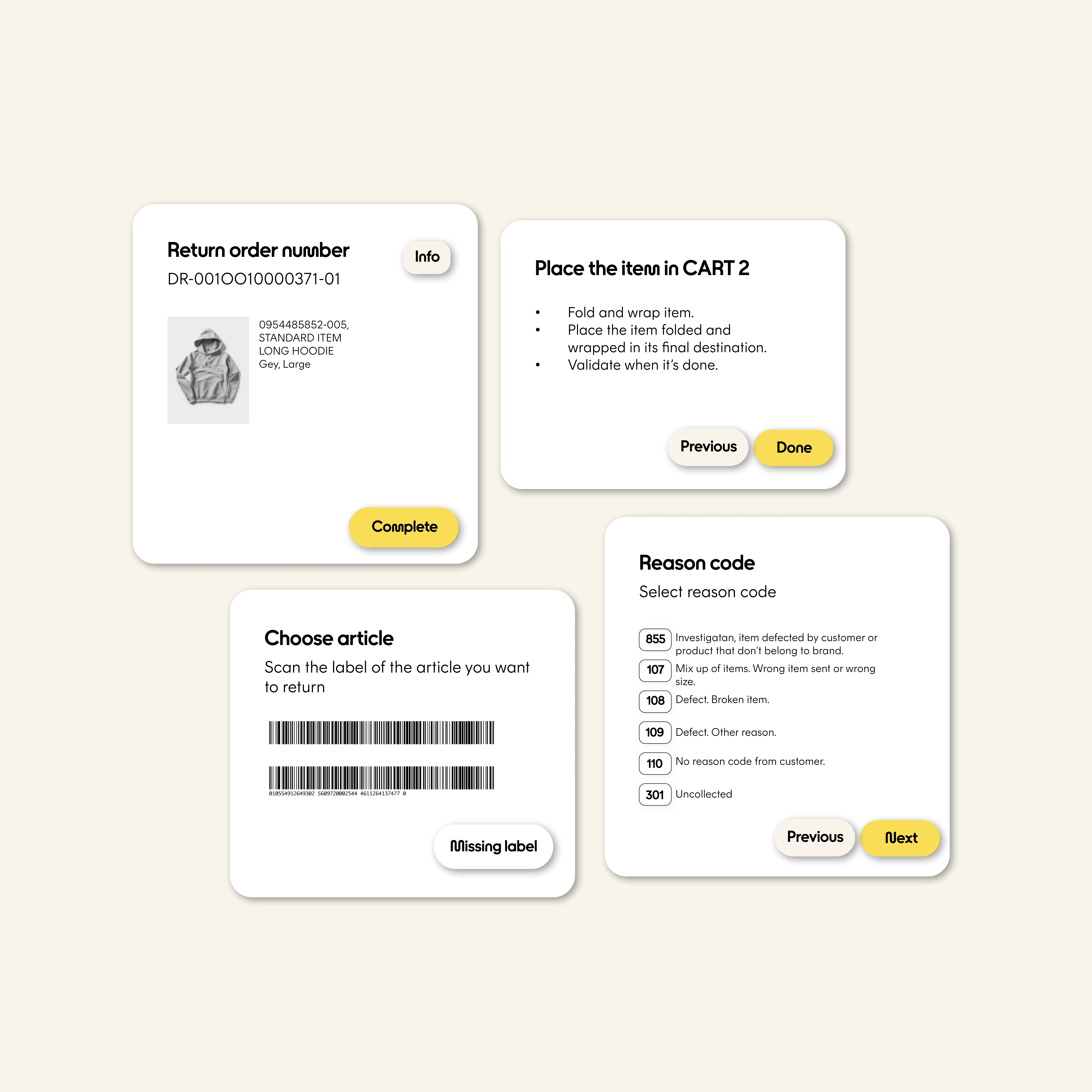15 must-have features when choosing a return management platform
Every return management platform has their own set of unique features and functions. But for your business, you need to make sure your return management platform has these following features.
- Multichannel support
- Reconversion engine (Through exchanges, vouchers, etc.)
- Return hub for cross-border shipping
- Master of refunding
- Return merchandise authorization
- Swift customer support
- User friendly return portal interface
- Return transport administration
- Logistic workflow engine
- Product routing
- Inventory management
- In-store/ship-to-store returns
- Supplier claims process
- Item validation
- Actionable return insights
1. Multichannel support
This feature ensures that an ecommerce business can handle returns from various selling platforms, including online stores, marketplaces, and physical retail outlets. It provides a consistent return experience for customers, regardless of where the purchase was made. Multichannel support helps in tracking and managing stock levels across all channels, reducing the likelihood of errors and discrepancies in inventory.
2. Reconversion engine
A reconversion engine is designed to reduce the financial impact of returns by prompting customers to opt for exchanges or store credit instead of outright refunds. It uses incentives such as vouchers or discounts on future purchases to encourage customers to remain engaged with the brand. This feature not only helps retain revenue but also fosters customer loyalty.
3. Return hub for cross-border shipping
Managing international returns involves navigating complex logistics, customs, and varied consumer laws. A return hub centralizes this process, making it more efficient and less costly by handling duties, taxes, and shipping in a streamlined manner. It’s a critical feature for businesses that have a global customer base and need to simplify the return process across different countries.
4. Master of refunding
Effective refund processing is essential for keeping customers happy. This system should smoothly handle various refund situations, supporting different payment methods and currencies, and follow local financial regulations. It’s designed to automate refunds, ensuring customers get their money back quickly and without hassle. Additionally, it smartly manages costs related to transport and product condition, and handles discounts, making every transaction as profitable as possible while discouraging unwanted consumer behavior.
5. Return merchandise authorization (RMA)
An RMA system is the backbone of return management, providing a structured approach to handling returns. It assigns a unique identifier to each return request, which helps in tracking and processing the item efficiently. By standardizing the return process, it minimizes errors and streamlines communication with customers.
6. Swift customer support
Quick and efficient customer support is essential during the return process to keep customers informed and satisfied. This feature should include tools for rapid communication, status updates, and issue resolution. It is crucial for maintaining a positive relationship with customers, even when they’re returning products.
7. User-friendly return portal interface
The return portal interface is where customers interact directly with the return process. It should be intuitive, easy to navigate, and accessible across devices. A good interface reduces customer frustration and helps to complete returns with minimal assistance, reducing the workload on customer service teams.
8. Return transport administration
Efficiently managing the transportation of returns is critical. This feature oversees the selection of carriers, generation of shipping labels, and real-time tracking of returned items. It should streamline the logistic operations, ensure cost-effectiveness, and provide transparency throughout the return shipping process.
9. Logistic workflow engine
Automating the return logistics workflow saves time and resources. This engine should optimize the routing of returns, handle quality checks, and manage the restocking or disposal of returned items. By automating these steps, businesses can significantly reduce the time and effort involved in handling returns.
10. Product routing
When evaluating a product routing feature, ensure the platform can intelligently direct returned items to the most appropriate destination based on specific attributes like color, seasonality, and product condition. The system should effectively manage detailed product information to determine the optimal return path for each item.
11. Inventory management
Effective return management platforms should seamlessly integrate returned items into existing inventory systems. It should accurately reflect stock levels in real-time, facilitating quick restocking of sellable returns and identifying trends in return reasons to inform inventory forecasting.
12. In-store/ship-to-store returns
For businesses with brick-and-mortar operations, in-store return capabilities offer customers a convenient option to return online purchases. This feature should enable quick processing of these returns, update inventory in real-time, and potentially convert return visits into additional sales opportunities.
13. Supplier claims process
This involves a system for managing returns to suppliers or manufacturers in cases of defective or damaged goods. The feature should automate the claims process, document communications, and track the status of supplier reimbursements, helping businesses recover costs efficiently.
14. Item validation
Proper validation ensures that returned items are authentic, in acceptable condition, and eligible for return under the company’s policy. The platform should facilitate a thorough inspection process, document item conditions, and prevent fraudulent returns, thereby safeguarding the business’s interests.
15. Actionable return insights
When evaluating a returns platform, ensure it provides advanced return data analytics on both a product and customer level, as well as detailed profitability insights. This feature should integrate seamlessly with your CRM and e-commerce platform, allowing you to dissect the reasons behind returns and assess their impact on your bottom line in a granular manner. By understanding these dynamics, you can tailor your strategies to enhance product offerings and improve overall customer satisfaction, directly influencing your profitability.



